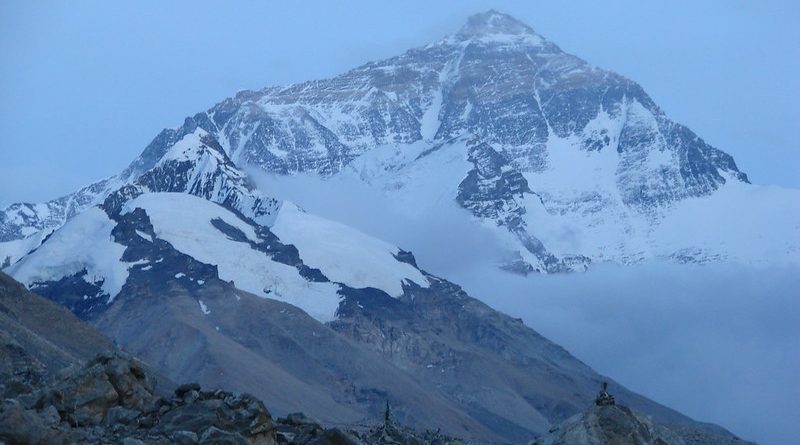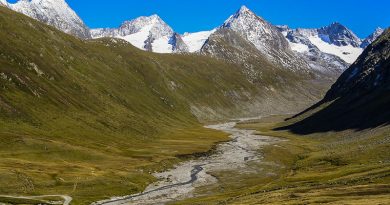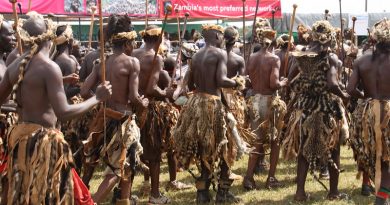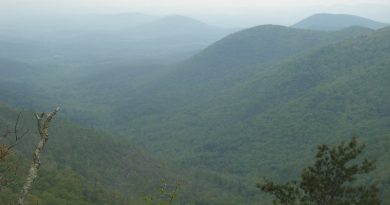Trekking Mount Everest
Trek Essentials
Where: Tibetan Plateau, Himalayas, Nepal
Best season: Autumn and early Winter: September to Early December.
Best sights: Surveying the whole world beneath your feet on the highest point on earth (if you can still breath!)
Remember To Bring: A sherpa guide, oxygen and serious professional mountaineering clothes and equipment.
Watch out for: Avalanches and hypothermia – many have died during the ascent.
Where It’s At
The word Nepal conjures up an image of towering mountains rising to the heavens, covered with layers of blue cold ice and snow. In this landscape of giants lies the world’s tallest peak, Mount Everest. Situated at the edge of the Tibetan Plateau (Qing Zang Gaoyuan), on the border of Nepal and the Tibet Autonomous Region of China, Mount Everest was known as Peak XV until 1856 when it was named after Sir George Everest, the surveyor general of India from 1830 to 1843. The naming also coincided with an official announcement of the mountain’s height. Located at a crossroad of cultures, Mt Everest, like the people who inhabit its kingdom, has picked up many languages. Nepali people refer to the mountain as Sagarmatha, meaning “Forehead in the Sky.” Tibetan and Sherpa people of northern Nepal refer to the mountain as Chomolungma, Tibetan for “Goddess Mother of the World.”
Geology of Mount Everest
There are many legends and myths related to this mother of all mountains but its origin, like the rest of the Himalayan Mountains, are evident. Mount Everest rose from the floor of the ancient Tethys Sea. The range was created when the Eurasian continental plate collided with the Indian sub continental plate about 30 to 50 million years ago. Eventually the marine limestone was forced upward to become the characteristic yellow band on the top of Mount Everest. Beneath the shallow marine rock lies the highly metamorphosed black gneiss (foliated, or layered, rock) of the Pre-cambrian era, a remnant of the original continental plates that collided and forced up the Himalayas. Mount Everest is covered with huge glaciers that descend from the main peak and nearby peaks. The mountain itself is a pyramid-shaped horn, sculpted by the erosive power of the glacial ice.
Worship and Conquest
The traditional people who live near Mount Everest have worshipped the Himalayas and imagined them as the homes of the gods. Because the peaks were considered sacred, no local people scaled them before the early 1900s. When foreign expeditions started to bring tourist dollars and Western ideas to the area, people of the Sherpa ethnic group began to serve as high-altitude porters for them. Because Nepal had been closed to foreigners since the early 1800s, all pre-World War II Everest expeditions were forced to recruit Sherpa porters from Darjiling (Darjeeling), India, then circle through Tibet and approach Everest from the north.
Trekking Safety
The difficulties while climbing Mount Everest are legendary. Massive snow and ice avalanches are a constant threat to all expeditions. Sometimes they bury valleys, glaciers, and climbing routes. Camps are chosen to avoid known avalanche paths, and climbers who make ascents through avalanche terrain try to cross at times when the weather is most appropriate. Apart from an avalanche, hurricane-force winds are a well-known hazard on Everest, and many people are endangered or killed when their tents collapse or are ripped to shreds by the gales. A particularly hazardous spot is the famous Khumbu Icefall, which is located not far above Base Camp and is caused by the rapid movement of the Khumbu glacier over the steep rock underneath. Another deathly risk is hypothermia, the dramatic loss of body heat due to the invariably low temperatures.
Costs and Practicalities
In spite of the hazards involved, a lot of tours companies have included mountain trekking as part of their program. While trekking to the summit of Everest might be a challenging not to say expensive affair, trekking around the base camp costs from around $1000 to $1500 per person. Foreigners who wish to travel in semi-restricted areas have to obtain a trekking permit from the Department of Immigration. However this does not apply to the popular trekking regions of Annapurna, Everest, and Langtang-Helambu. Trekkers entering National Parks/ Conservation Areas must pay applicable entry fees. Mostly the trekking permits and the entry fees are included in the trek cost. A lot of environmental issues and concerns are important to consider while trekking in the Everest region. Some climbing gear is recycled by local residents either for their own use or for resale, it is estimated that more than fifty tons of plastic, glass, and metal were dumped between 1953 and the mid-1990s in what has been called “the world’s highest junk yard.” Take all packaging and discarded items back down with you, and remember that matter is slow to biodegrade at this high altitude.
At the Summit
Being able to climb all the way to the top of Mount Everest is a near to impossible task, surely a cause for celebration if anyone manages to do it. On May 29, 1953, under the tenth British expedition flag and the leadership of John Hunt, Edmund Hillary of New Zealand and Sherpa Tenzing Norgay of Nepal successfully completed the first ascent of Mount Everest via the South Col. May 2003 marked 50 years since the first successful climb. In 1975 Junko Tabei of Japan became the first woman to summit Mount Everest. A mixed feeling of pride and respect collects as one realises that man has been able to explore this god-like mountain peak, a monument, a symbol of nature’s magnificence to some and of sacred worship to the others.
More Information
Getaway! Himalayan Eco-Trekking
Tour guides who offer Everest treks, Everest Base Camp trekking, Everest Expedition Route trek.
Discover Asia Travel
They offer exciting tours, jungle safaris, treks, mountain flight sightseeing, nature tours and mountaineering expeditions.
By Nitasha Kulashreshtha




